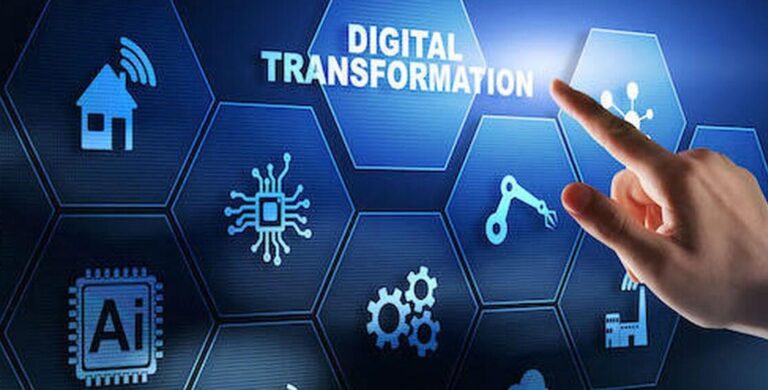
The Faculty of Economics and Business Alma Ata – Digital transformation has changed how companies interact with consumers. The adoption of digital technologies such as e-commerce, mobile apps, and data analytics optimizes business processes and enhances customer experience.
New Retail Digitalization Internet technology accelerates the digital transformation of new retail. With the “People-Product-Place” approach, smart digital systems are designed to digitize consumers, channels, and terminals. The use of member label databases and computer vision systems makes it easier to identify product information and provide real-time alerts, which aids in precision marketing and improved consumer operations. Smart digital systems help retail companies understand consumer behavior and respond to their needs more efficiently (Xie, 2023).
Digital Transformation in E-commerce Digital transformation in e-commerce includes the use of technologies such as mobile apps and artificial intelligence to improve trade processes. This digitalization streamlines the buying and selling process, automates operational tasks, and enhances communication with consumers. The use of internet marketing technologies also helps companies interact effectively with consumers, creating emotional connections through engaging storytelling. This is discussed in research by Azaryan and Makhnonosov (2023), which highlights the importance of digital technologies in creating a better shopping experience.
Consumer Experience in Digital Transformation The application of digital technologies such as video conferencing, location-based mobile apps, and augmented reality provides a personal and interactive environment for consumers. Studies show that companies use models like “remote expert” and “digital assistant” to meet consumers’ needs for personalized and fast solutions. The implementation of these models significantly enhances consumer experience. Parise et al. (2016) explain that these models help companies deliver more responsive and personalized services to consumers.
Digitalization Strategies in E-commerce Digital transformation strategies should focus on creating convenient and reliable platforms for both buyers and sellers, improving process efficiency, and boosting sales. Flexibility in adapting to market and consumer needs is crucial. For example, analyzing buying patterns and product returns can help develop personalized strategies to increase sales and reduce return rates. The importance of data analysis in optimizing marketing and operational strategies is emphasized (Jauhar et al., 2023).
Implications of Digitalization for Physical Stores Digitalization affects not only e-commerce but also physical stores. Consumers’ use of mobile apps to compare prices and products in physical stores, as well as technologies like the Internet of Things (IoT) and augmented reality, are changing shopping behavior patterns. The integration of digital and physical logic in retail enhances a more holistic shopping experience. This is outlined in research by Hagberg et al. (2017), which highlights how digital technologies are transforming the way consumers interact with physical stores (Hagberg et al., 2017).
Conclusion Digital transformation for consumers involves various technologies that optimize business processes and enhance customer experience. Digitalization creates more personal and efficient relationships between companies and consumers, so businesses must continually adapt to the dynamic needs and preferences of the market.
Source:
- https://eventcerdas.com/utama/2022/07/18/5-tantangan-besar-dalam-transformasi-digital-bisnis/
- Xie, M. (2023). Smart system design for digital transformation of new retail. , 12599,
125990W – 125990W-8. https://doi.org/10.1117/12.2673515. - Azaryan, E., & Makhnonosov, D. (2023). DIGITAL TRANSFORMATION STRATEGY OF
E-COMMERCE. EKONOMIKA I UPRAVLENIE: PROBLEMY, RESHENIYA.
https://doi.org/10.36871/ek.up.p.r.2023.07.03.020. - Parise, S., Guinan, P., & Kafka, R. (2016). Solving the crisis of immediacy: How digital
technology can transform the customer experience. Business Horizons, 59, 411-420.
https://doi.org/10.1016/J.BUSHOR.2016.03.004. - Jauhar, S., Chakma, B., Kamble, S., & Belhadi, A. (2023). Digital transformation
technologies to analyze product returns in the e-commerce industry. Journal of Enterprise
Information Management. https://doi.org/10.1108/jeim-09-2022-0315. - Hagberg, J., Jonsson, A., & Egels-Zandén, N. (2017). Retail digitalization: Implications for
physical stores. Journal of Retailing and Consumer Services, 39, 264-269.
https://doi.org/10.1016/J.JRETCONSER.2017.08.005.







